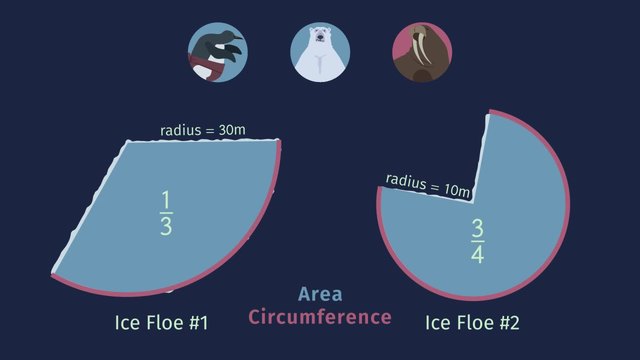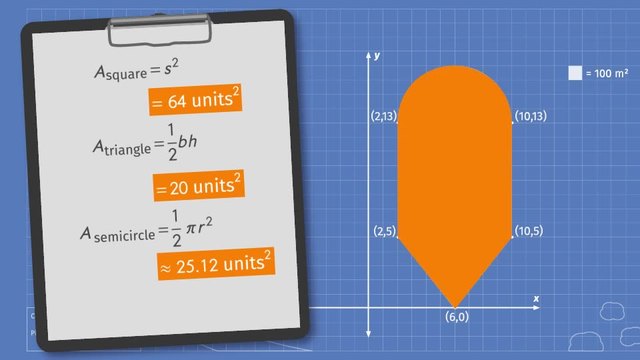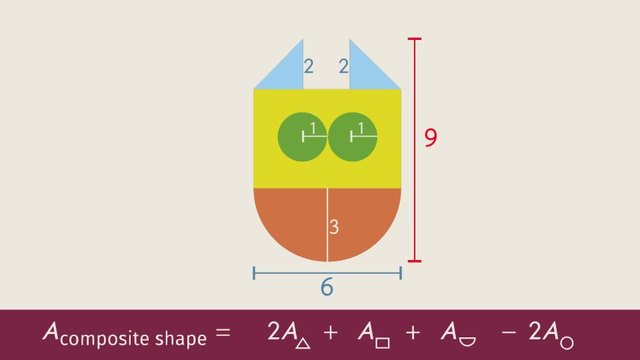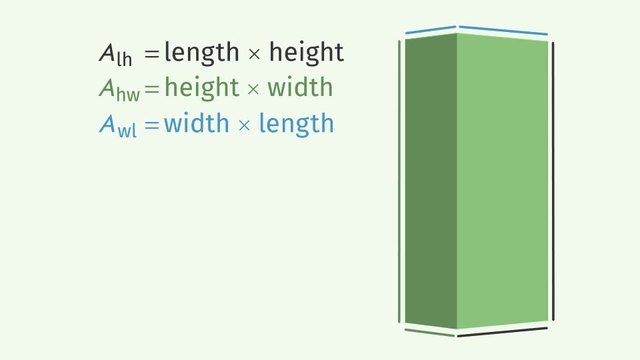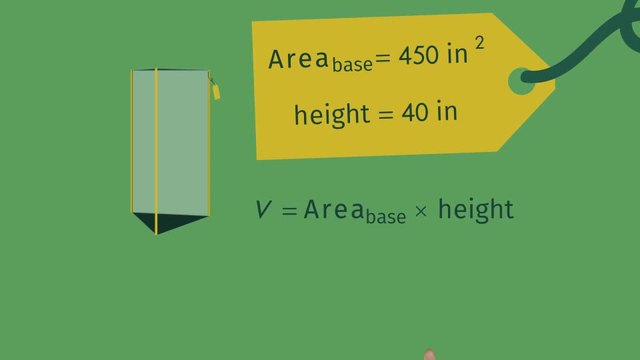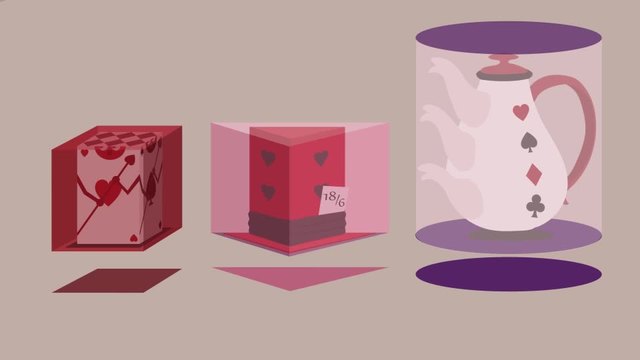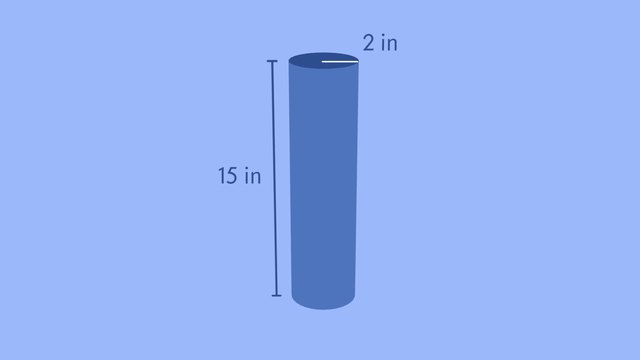All About Pi
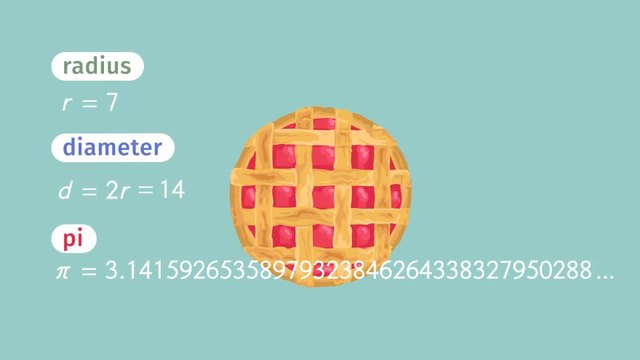

Basics on the topic All About Pi
After this lesson, you will be able to use the approximate value of pi to solve math real-world problems.
The lesson begins by teaching you that pi has an approximate value of 3.14 or 22/7. It leads you to learn that pi is needed to find the circumference and area of a circle . It concludes with an understanding that pi plays an important role when solving problems involving circles.
Learn about pi by helping Granny Griswald distinguish the correct size of pumpkin pie for dessert.
This video introduces new concepts, notation, and vocabulary such as the term radius (the distance from the center to the circumference of a circle); diameter (a line that passes through the center of a circle whose endpoints are on the circle and exactly twice the measure of the radius); circumference (the distance around the edge of a circle); area ( the measure of surface or region covered of any 2D object); pi ( an irrational number with an approximate value of 3.14 or 22/7 and known also as the ratio of a circle’s circumference to its diameter)
Before watching this video, you should already be familiar with finding revolutions, circumference and area of a circle together with their formulas.
After watching this video, you will be prepared to learn to solve real-life problems and Mathematics concepts involving pi.
Common Core Standard(s) in focus: 7.G.B.4 and 7.G.B.6 A video intended for math students in the 7th grade Recommended for students who are 12-13 years old
Transcript All About Pi
It's Thanksgiving at the Griswald house and the food is ready but granny Griswald notices that someone has eaten all the pumpkin pies! Granny Griswald has an idea! Call the best pumpkin pie delivery service in town, All About Pi(e)! The Griswald family just loves pumpkin pie. So, to satiate the family's dessert hunger, Granny must make sure that everyone has enough pie. Unfortunately, All About Pi(e) has changed their menu recently, and now only the radius of each pie is labeled. Let’s look at the largest pie. First, we notice that this pie is labeled r = 7. r' is a common variable used to stand for the radius of a circle. The radius is the distance from a circle’s center to its edge. The longest distance between one side of a circle to the other is called the diameter. The diameter is exactly two times the length of a circle’s radius in this case, the diameter is 14 inches. The diameter and radius are used to calculate the circumference and area of circles with one special ingredient...π!!! Pi is what mathematicians call an irrational number. This means that the number cannot be expressed in fraction form. It also means that we can use a shorter form of pi in our calculations. Two common approximations of pi are the decimal version, 3.14, which is accurate to two places and the fraction form, 22 over 7, which is accurate to three places. But for us, using 3.14 for our calculations will be good enough. Π is the ratio between a circle’s radius or diameter and its area and circumference, respectively. For example, if you want to know the area of a circle, you simply have to use the formula: pi 'r' squared. Let’s use this formula to calculate the visible area of the largest pie. First, we take our formula, ‘A’ equals pi ‘r’ squared and we substitute 7 for ‘r’. 7 squared, as you may already know, is 49. We can write our answer in two ways: 49 pi, or in decimal form -- using 3.14 for pi -- about 153.94. Granny thinks 10 of these pies will satisfy the Griswald family and it wouldn't be the worst thing if there are leftovers! Since it's a special occasion Granny decides to get a special topping on the crust of the pie whipped cream and walnuts. Let’s take a look at the distance around each pie, or its circumference. The formula for the circumference of a circle is circumference equals 2 'pi' 'r'. But, since the diameter is two times a circle’s radius, another way to represent this formula is to write it like this: 'c' equals pi 'd'. Just like with area, there are two ways to represent the circumference: 14π or in approximate decimal form...43.98. Confident that this is the size of pie she needs, granny orders 10 pies with the whipped cream and walnut crust, of course!!! The pies are ready and the owner of All About Pi(e) jumps in his pie-mobile and heads off to the Griswald’s. If the distance to the Griswald’s house is 50 feet, and the radius of the pie-mobile’s wheels are 15.915 inches how many revolutions do the wheels make between All About Pi(e) and the Griswald’s house? If we take the distance between these two points as 50 ft, or 600 inches and we know the circumference of a circle is given by the formula 2 pi 'r' we can find out how many rotations each wheel will make on the way to granny's house. Evaluating what we have, and using 3.14 for pi we can see that each wheel will make about 6 rotations between the two locations. Something smells good...and there's the doorbell! The pumpkin pies must be here!
Huh? How in the world did Russ Griswald get in there so fast?
All About Pi exercise
-
Identify the different parts of a circle.
HintsThe diameter and radius go through the center of the circle.
The area and circumference are calculations of the space inside the circle and the distance around the circle, respectively.
The diameter is $8~\text{cm}$ and the radius is $4~\text{cm}$.
SolutionCenter
- The center is the point in the middle of the circle.
- The radius is the line that extends from the center to the edge.
- The diameter is the line that extends from one side of the circle to the other, passing through the center.
- The circumference is a measure of the distance around the circle.
- The area is the total amount of space inside of the circle.
-
Calculate area and circumference of the given circles.
HintsThe formula for the area of a circle is, $A=\pi r^2$.
The formula for the circumference of a circle is, $c=2\pi r$.
If the radius of the circle is 10cm,
$\text{Area}=\pi r^2=\pi (10)^2=100 (3.14)= 314$
$\text{Circumference}=2\pi r=2(3.14)(10)=62.8$
If the diameter of the circle is 10cm,
$\mathrm{Area}=\pi r^2=\pi (5)^2=25 (3.14)= 78.5$
$\mathrm{Circumference}=d\pi =10\pi=31.4$
Solution1. Area
The area of a pie can be calculated by using the formula, $A=\pi r^2$, where $r$ represents the radius of the circle.
To solve for the area of the pie, substitute 5 into the equation for $r$, and simplify.
- $A=\pi(5^2)=25\pi$
This means that the answer can be written as,
- $A=25(3.14)=78.5$
The circumference of a pie can be calculated by using the formula, $c=2\pi r$ where $r$ represents the radius of the circle.
Since the radius is twice the diameter or $2r$, another way to write the circumference formula is, $c=d\pi$.
We are given that the radius is $6$cm. This means that the diameter of the circle is $12$cm.
Therefore, we can represent the circumference with the radius formula, $c=2\pi (6)$ which is equivalent to the the diameter formula, $C=12\pi$.
We can substitute $\pi$ and find the circumference of the circle to be, $c=12(3.14)=37.68$.
3. The area of the cherry pie with radius 7cm is,
- $\mathrm{Area}=\pi r^2=\pi (7^2)=49\pi$ or $153.86$
- Using the diameter formula, $\mathrm{circumference}=d\pi =6\pi$ or $18.84$
- Using the radius formula, $\mathrm{circumference}=2\pi r=2\pi (3)=6\pi$ or $18.84$
-
Identify true statements about circles and $\pi$.
HintsA circle with a radius of $4$ has an area of $16\pi$.
A circle with a radius of $4$ has a circumference of $8\pi $.
A circle with a diameter of $6$ has an area of $9\pi$ and a circumference of $6\pi$.
SolutionTrue Statements
- The area of a circle is $A=\pi r^2$.
- The radius extends from the center to the edge.
- Circumference is the distance around the edge of a circle.
- $\pi =3.14$
- $2$ times the radius is the diameter.
- $\pi$ is a rational number is false because $\pi$ is an irrational number. An irrational number cannot be expressed as a ratio between two numbers or as a simple fraction because there is not a finite number of numbers when written as a decimal. Instead, the numbers in the decimal expansion go on forever, without repeating. This is why $\pi$, which equals 3.14159265..., is an irrational number.
- The diameter of a circle is half of the radius is false because the radius of a circle is half of the diameter.
- The circumference of a circle is, $2\pi d$ is false because the circumference formula is $c=2\pi r$. Since the radius of a circle is half the diameter, the circumference formula can also be written as $d\pi$ but not $2\pi d$.
-
Calculate the distance traveled by the delivery truck.
HintsLet $r$ represent the radius of a circle.
- $\text{revolutions}=\frac{\text{distance}}{2\pi r}$
A delivery truck has wheels with a radius 13.125 inches. The truck drives 20 feet to the first house and 42 feet to the second house. Find the number of rotations:
- Add the two distances together: $20+42=62$ feet
- Since the radius is in inches, convert $62$ feet to inches: $62(12)=744$ inches
- $\text{revolutions}=\frac{\text{distance}}{2\pi r}$
- $\text{revolutions}=\frac{744}{2(3.14)(13.125)}$
- $\text{revolutions}=\frac{744}{82.43}$
- $\text{revolutions}=9$
- Each wheel makes $9$ revolutions.
A delivery truck has wheels with a radius $13.25$ inches. Each wheel makes $17$ rotations during the delivery. Find the distance of the trip:
- $\mathrm{revolutions}=\frac{\mathrm{distance}}{2\pi r}$
- $17=\frac{\mathrm{distance}}{2(3.14)(13.125)}$
- $17=\frac{\mathrm{distance}}{82.43}$
- $17(82.43)=\mathrm{distance}$
- $\mathrm{distance}=1,401.31$ inches
- $\frac{1401.31}{12}=116.77$
SolutionFor the following problems,
- The radius of each wheel is $15.915$ inches.
- Revolutions and rotations mean the same thing.
- $1\text{ft}=12\text{in}$
- $\text{revolutions}=\frac{\text{distance}}{2\pi r}$
- Since the radius is in inches, convert $84$ feet to inches: $84(12)=1008$ inches
- revolutions$=\frac{1008}{2(3.14)(15.915)}$
- revolutions$=\frac{1008}{99.95}$
- revolutions$=10.08$
- Each wheel makes about $10$ rotations.
- Add the two distances together: $1250+90=1340$ft
- $\text{revolutions}=\frac{\text{distance}}{2\pi r}$
- Since the radius is in inches, convert $1340$ feet to inches: $1340(12)=16080$ inches
- revolutions$=\frac{16080}{2(3.14)(15.915)}$
- revolutions$=\frac{16080}{99.95}$
- revolutions$=160.88$
- Each wheel makes about $161$ rotations.
- $\text{revolutions}=\frac{\text{distance}}{2\pi r}$
- $125=\frac{\text{distance}}{2(3.14)(15.915)}$
- $125=\frac{\text{distance}}{99.95}$
- $125(99.95)=\text{distance}$
- $\text{distance}=12493.75$ inches
- To convert the distance to feet, divide by $12$: $\frac{12,493.75}{12}=1041.15$
- Therefore, the delivery truck traveled about $1041$ feet.
- $14$ rotations
- $75$ rotations
- $47$ rotations
- Add the rotations together: $14+75+47=136$
- $\mathrm{revolutions}=\frac{\mathrm{distance}}{2\pi r}$
- $136=\frac{\mathrm{distance}}{2(3.14)(15.915)}$
- $136=\frac{\mathrm{distance}}{99.95}$
- $136(99.95)=\mathrm{distance}$
- $\mathrm{distance}=13595.2$ inches
- To convert the distance to feet, divide by $12$: $\frac{13593.2}{12}=1132.77$
- Therefore, the delivery truck traveled about $1133$ feet.
-
Determine which numbers are rational and which numbers are irrational.
HintsA rational number can be written as a fraction where both the numerator and denominator are integers.
A irrational number cannot be expressed as a fraction.
Rational Numbers:
- $5$, $\frac{1}{2}$, $-2$, $-\frac{7}{8}$
- $0.07007...$, $0.78788...$
SolutionA rational number is a number that can be written as a fraction where both the numerator and denominator are integers, and the denominator is not zero:
- $\frac{1}{9}$, $-5$, $-\frac{2}{3}$, $-0.275$, $0.333333$
- $\pi$, $0.03003...$, $0.347892...$, $2.71828...$, $3.1415926...$
-
Determine the different measurements of the Ferris wheel.
HintsLet $r$ represent the radius of a circle.
- $\text{Area}=\pi r^2$
- $\text{Circumference}=2\pi r$
- $ \text{Revolutions}=\frac{\text{Distance}}{2\pi r}$
A circle with diameter $10$ has the following area and circumference:
- $\text{Area}=3.14(5^2)=78.5$.
- $\text{Circumference}=2(3.14)(5)=314$.
A wheel with radius $2~\text{ft}$ and that travels $100~\text{ft}$ has the following number of rotations:
- $\text{revolutions}=\frac{100}{2(3.14)(2)}$
- $\text{revolutions}=\frac{100}{12.56}$
- $\text{revolutions}=7.96$
- The wheel makes about $8$ rotations.
Solution1. The radius of the Ferris wheel is $39$ feet.
- The radius of a circle is half of the diameter.
- Since the diameter is $78$ft, $\frac{1}{2}(78)=39$.
- The formula for circumference is, $C=2\pi r$.
- $c=2(3.14)(39)$
- $c=244.92$
- Rounding $244.92$ to the nearest whole number yields $245$.
- The formula for area is, $A=\pi r^2$.
- $A=3.14(39^2)$
- $A=4775.94$
- Rounding $4775.94$ to the nearest whole number yields $4776$.
- $\text{revolutions}=\frac{\text{distance}}{2\pi r}$
- Since both the distance and radius are measured in feet, we do not have to do any unit conversions.
- revolutions$=\frac{745}{2(3.14)(39)}$
- revolutions$=\frac{745}{244.92}$
- revolutions$=3.04$
- Each wheel makes about $3$ rotations.
- $\text{revolutions}=\frac{\text{distance}}{2\pi r}$
- $5=\frac{\text{distance}}{2(3.14)(39)}$
- $5=\frac{\text{distance}}{244.92}$
- $5(244.92)=\text{distance}$
- $\text{distance}=1224.6$inches
- Therefore, the delivery truck traveled about $1225$ feet.


